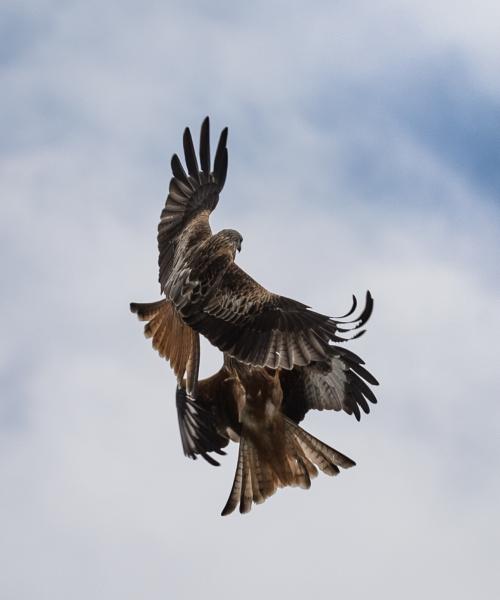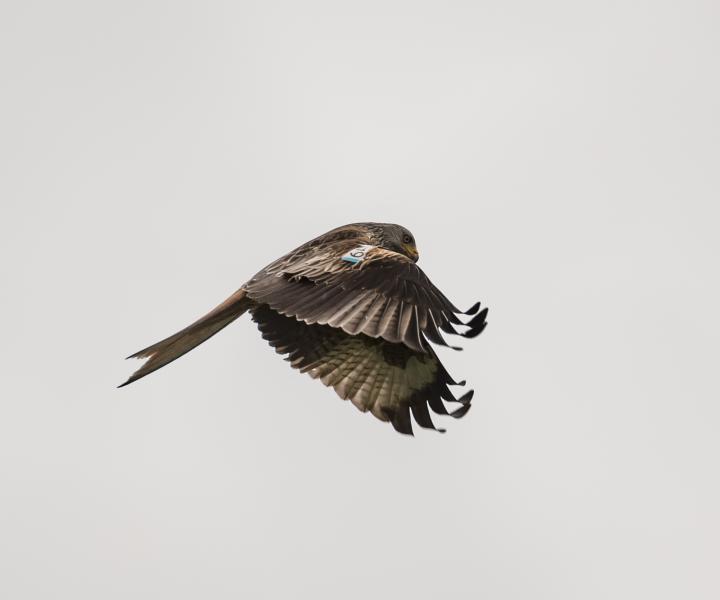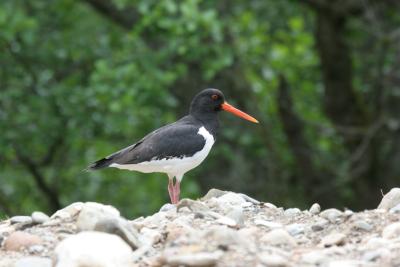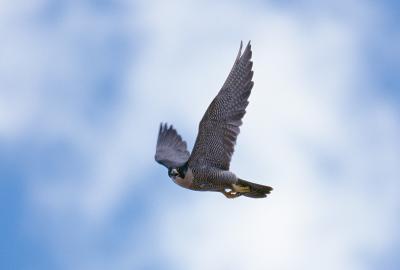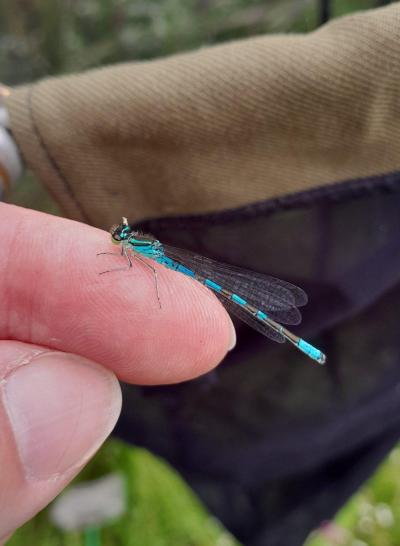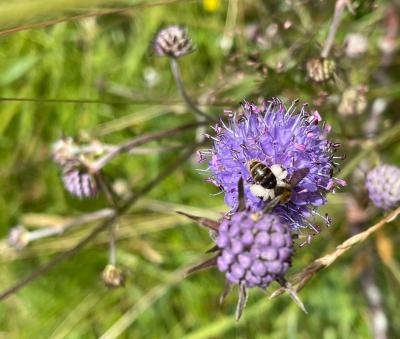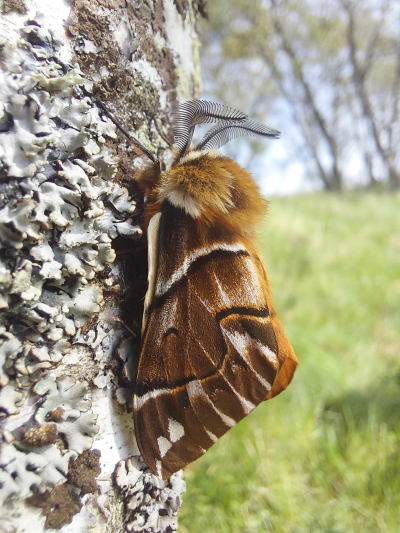Red kite
Milvus milvus
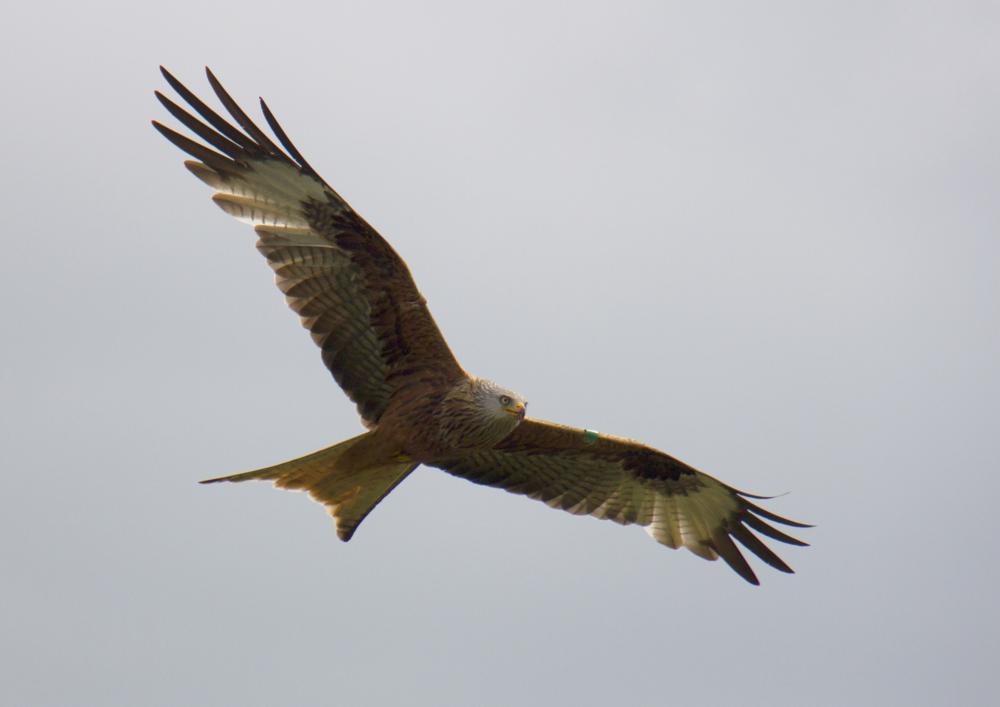
The red kite is a medium-sized raptor with a huge wingspan. Its long forked tail and reddish-brown colour set it apart from other birds of prey found in the Cairngorms National Park.
Factsheet
Weight: 0.8 to 1.3kg
Lifespan: Four years
Best time to spot: Year-round
Other distinguishing features to look out for include long angular wings (175 to 195cm) with white patches underneath and dark individual feather ‘fingers’ at the tips, a pale grey head, yellow legs and a yellow beak with a black tip.
Several collective nouns exist to describe a group of red kites - a wake, roost, husk, or kettle - but soar seems the most fitting. The red kite’s bodyweight-to-wingspan ratio means it can stay airborne for hours at a time, wheeling through the sky using its tail to steer and barely moving its wings.
The red kite may be a bird of prey, but you’re more likely to come across one scavenging on another animal’s leftovers or road kill than hunting something that’s still alive. Their main diet is carrion (dead or decaying flesh) and worms, though they will kill young birds or small mammals, such as voles, mice, baby rabbits or rats, if the opportunity presents itself.
Red kites are not migratory birds, though Scottish youngsters - called juveniles - do travel south, sometimes as far as Cornwall and Ireland. When they reach breeding maturity at two to three years old, they stay in their chosen breeding territory year-round and form lifelong pairs.
Did you know?
The red kite is a medium-sized raptor with a huge wingspan. Its long forked tail and reddish-brown colour set it apart from other birds of prey found in the Cairngorms National Park.
Factsheet
Weight: 0.8 to 1.3kg
Lifespan: Four years
Best time to spot: Year-round
Other distinguishing features to look out for include long angular wings (175 to 195cm) with white patches underneath and dark individual feather ‘fingers’ at the tips, a pale grey head, yellow legs and a yellow beak with a black tip.
Several collective nouns exist to describe a group of red kites - a wake, roost, husk, or kettle - but soar seems the most fitting. The red kite’s bodyweight-to-wingspan ratio means it can stay airborne for hours at a time, wheeling through the sky using its tail to steer and barely moving its wings.
The red kite may be a bird of prey, but you’re more likely to come across one scavenging on another animal’s leftovers or road kill than hunting something that’s still alive. Their main diet is carrion (dead or decaying flesh) and worms, though they will kill young birds or small mammals, such as voles, mice, baby rabbits or rats, if the opportunity presents itself.
Red kites are not migratory birds, though Scottish youngsters - called juveniles - do travel south, sometimes as far as Cornwall and Ireland. When they reach breeding maturity at two to three years old, they stay in their chosen breeding territory year-round and form lifelong pairs.
Did you know?
Their scavenging ways once protected red kites, when medieval rulers realised how helpful they were in keeping streets free of rubbish and food waste. However, their luck changed in the 16th century when that royal protection was removed. From then until the early 20th century, the UK population of red kites declined nearly to extinction, with only a few breeding pairs remaining in Wales.
Happily, the red kite has made a strong recovery thanks to planned reintroductions using birds from other countries. While the Cairngorms National Park wasn’t one of these reintroduction locations, the red kites released since 1989 in other places in Scotland are gradually expanding their reach, and they are now an increasingly common sight here.
Red kites build messy nests in trees, occasionally using other birds’ nests if available. Before egg-laying takes place around April, red kites like to decorate their nests. They often use rubbish such as pieces of plastic, paper and rags. In Scotland, sheep’s wool is a common addition.
Red kites lay one to three eggs, which the female incubates for 31 to 32 days while the male brings food. Chicks fledge after about 55 to 60 days and are fed by their parents for several weeks before flying off to live independently.






